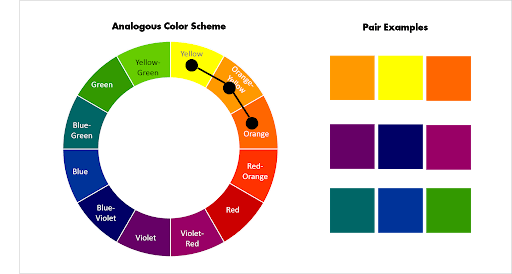
For example, red mixed with orange will yield a red-orange hue. Tertiary colors result when you mix a primary color with a secondary color. So the secondary colors on a color wheel are purple, orange and green and each color appears between the two primary colors that create it. For example, red and blue make purple, red and yellow make orange and yellow and blue make green. Secondary colors come from mixing two of the primary colors. Related: 9 Types of Designer Jobs for Creative People Secondary colors This means it’s impossible to obtain primary colors from any other colors. Artists and designers use these three colors as the base hues for mixing all other shades within the color wheel. Primary colors include red, blue and yellow. These types of colors include: Primary colors The color wheel splits apart the colors into distinct types, which you can use as a foundation for creating logical flow, balance and harmony in design and fine art applications.


This chart represents the relationships between colors, and whether they’re similar or contrasting. This concept of color theory visualizes the placement of color in a circular chart. The color wheel is a visual representation of all the colors humans can see and professionals can use in their designs.
#Whats analogous colors how to#
Related: Using Color on a Resume: Pros, Cons and How To Do It Well The color wheel "Color theory" is an art and design principle that encompasses the ideas, principles and applications of color. Color theory includes three distinct concepts that you can apply to create logical structures and appealing visual elements within your designs: the color wheel, color harmony and color application or context.

In this article, we explore what color theory is and discuss the various aspects of this concept, including harmony, color association and color use. Understanding color theory concepts, including color associations, can help individuals design appealing and aesthetically pleasing marketing campaigns, interior design layout and web pages. Design professionals and artists may use color theory to create spaces and artwork that evoke a particular feeling within the viewer. Color theory encompasses a variety of design principles that apply to the context and use of color.


 0 kommentar(er)
0 kommentar(er)
